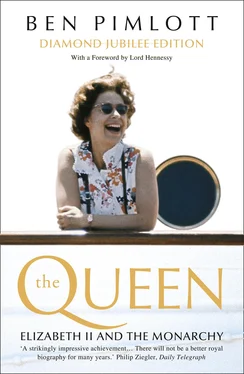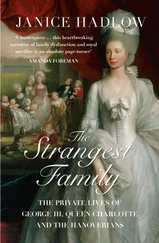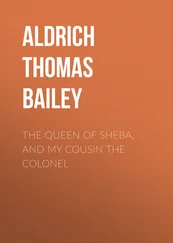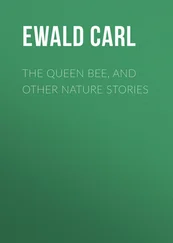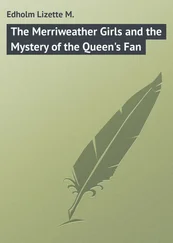Normality required a pet-name and this, the press was delighted to discover, Princess Elizabeth herself provided early on. At two and a half, she was reported to be calling herself ‘Tillabet’. 36Later, this became ‘Lisabet’ or ‘Lilliebeth,’ before settling down as ‘Lilibet,’ the name her close family have continued to call her all her life. Normality also required a passion, and this, too, the Princess obligingly furnished in her lifelong love of horses and dogs, which could be dated to the autumn of 1928, when the Duke of York took Naseby Hall in Northamptonshire for the hunting season, and Elizabeth accompanied her parents there for much of the winter. According to one inter-war chronicler, it was at Naseby ‘that Lisabet really fell in love with beautiful horses’. She enjoyed patting her father’s animals, and her nurse had to watch her closely, because of her habit of running off to the stables at the slightest excuse at any time of day. 37In addition, apparently, ‘she especially loved the hounds with their nervous erect tails and their elemental eagerness to be off’. 38
Horses and dogs had to be trained, and from a tender age, Princess Elizabeth was often portrayed in appropriate roles of command and authority in relation to them. But royal children required training too, and it was made clear, in every tale, that the Princess’s mischief was never allowed to get out of hand. If Elizabeth had a sense of fun, it was also (commentators took care to point out) kept in check. ‘Uncurbed without being spoilt’ was how the Sunday Dispatch described the barely walking child in an article entitled ‘The Roguish Princess’. 39‘Roguish’ was a favourite term in such accounts: it implied misbehaviour within acceptable and endearing limits. According to Alice Ring’s royally sanctioned description of the Princess, published in 1930, on one occasion Elizabeth said ‘My Goodness!’ in the hearing of her mother. She was ‘at once told that this was not pretty and mustn’t be repeated’. However, if she heard an adult use the unseemly expression, ‘up go her small arms in a gesture of mock amazement, and she presses her palms tightly over her mouth while her blue eyes are full of roguish laughter’. 40
Uncurbed was never allowed to mean over-indulged. ‘I don’t think any child could be more sensibly bought up,’ Queen Mary remarked. ‘She leads such a simple life and she’s always punished when she’s naughty.’ 41Here was a useful moral tale, for the edification of millions. ‘Once Lisbet had been naughty, for even princesses can be naughty, you know,’ wrote Captain Eric Acland, author of a particularly cloying biography published when Elizabeth was twelve, ‘and her mother, to punish her, refused to tell the usual bedtime story.’ 42According to another writer, if the Duchess of York was asked what her main duty was, ‘she would reply, “Bringing up my children”. She brings them up as she herself was brought up, with unremitting care and great practical intelligence.’ 43It was the accepted view. ‘No child of Queen Elizabeth’s will ever be spoilt,’ the writer Stephen King-Hall summed up, at the time of George VI’s Coronation. 44
But how could any child receive so much attention, and be the object of so many admiring glances, yet not be spoilt, even allowing for parental firmness? Here was an even deeper paradox in the iconography, never satisfactorily resolved. The usual answer – and the one that dominated characterizations of the Princess until her adolescence – was that her innocence was protected, as if by wall and moat, from the corrupting effects of vulgar fame and even of excessive loyal adoration. Chocolates, china sets and children’s hospital wards, even a territory in Antarctica, were named after her; the people of Newfoundland had her image on their postage stamps; songs were written in her honour, and sung by large assemblies of her contemporaries; while Madame Tussaud’s displayed a wax model of her astride a pony. However, according to one chronicler in the early 1930s, ‘of all this she is unconscious, it passes her completely by – and she remains just a little girl, like any other little girl . . . and passionately fond of her parents’. 45There was also the idea of a fairy-tale insulation from the projected thoughts and fantasies of the outside world – a ‘normal’ childhood preserved, by an abnormal caesura, from public wonder. ‘In those days we lived in an ivory tower’ wrote Elizabeth’s governess, many years later, ‘removed from the real world’. 46
Yet the very protection of the Princess, the notion of her as an innocent, unknowing, unsophisticated child who, but for her royal status, might be anybody’s daughter, niece or little sister, helped to sustain the popular idea of her as a ray of sunshine in a troubled world, a talisman of health and happiness. This particular quality was often illustrated by tales of her special, even curative, relationship with the King, which juxtaposed youth and old age, gaiety and wisdom, the future and the past, in a heavily symbolic manner. From the time of the Yorks’ Australian tour, when the Princess was fostered at Buckingham Palace, it had been observed that the ailing Monarch, whose health was becoming a matter of concern throughout the Empire, derived a special pleasure from the company of his granddaughter.
There were many accounts which brought this out. ‘He was fond of his two grandsons, Princess Mary’s sons,’ the Countess of Airlie recalled, ‘but Lilibet always came first in his affections. He used to play with her – a thing I never saw him do with his own children – and loved to have her with him’. 47Others observed the same curious phenomenon: on one occasion, the Archbishop of Canterbury was startled to encounter the elderly Monarch acting the part of a horse, with the Princess as his groom, ‘the King-Emperor shuffling on hands and knees along the floor, while the little Princess led him by the beard’. 48When she was scarcely out of her pram, a visitor to Sandringham reported watching the King ‘chortling with little jokes with her – she just struggling with a few words, “Grandpa” and “Granny”’. 49The Princess’s governess recalled seeing them together, near the end of the King’s life, ‘the bearded old man and the polite little girl holding on to one of his fingers’. Later, it was claimed that the King was ‘almost as devoted a slave to her as her favourite uncle, the Prince of Wales’. 50
Yet it was also stressed that she was taught to know her place. Deferential manners were an ingredient of the anecdotes, alongside the spontaneity. One guest noted that after a game of toy bricks on the floor with an equerry, she was fetched by her nurse, ‘and made a perfectly sweet little curtsey to the King and Queen and then to the company as she departed’. This vital piece of royal etiquette had been perfected before her third birthday. When it was time to bid her grandfather goodnight, she would retreat backwards to the door, curtsey and say, ‘I trust your Majesty will sleep well’. 51Some accounts took the Princess’s concern beyond mere politeness. For example, it was said that when the King was sick, she asked after him, and, on seeing her grandmother, ‘flung herself into the Queen’s arms and cried: “Lillybet to see Grandpar today?”’ 52There were also reports that when the royal landau passed down Piccadilly a shrill cry was heard from the balcony at No. 145: ‘Here comes Grandpa!’ – causing the crowd to roar with loyal delight. 53There was much approval, too, for her name for the King: ‘Grandpa England’. 54
But the most celebrated aspect of the relationship concerned the Princess’s prophylactic powers during the King’s convalescence from a near-fatal illness in the winter of 1928–9. During this anxious time, the little girl ‘acted as a useful emollient to jaded nerves,’ 55a kind of harp-playing David to the troubled Monarch’s Saul.
Читать дальше
